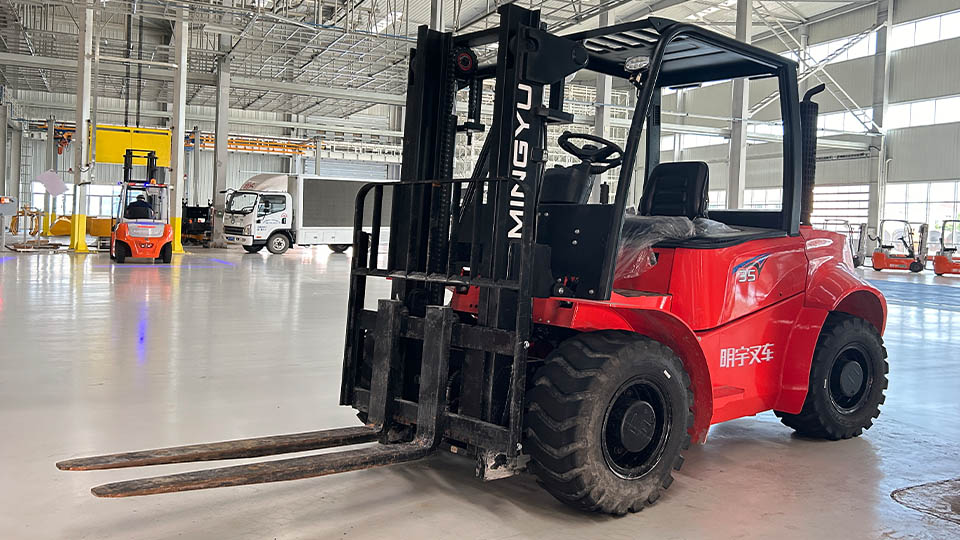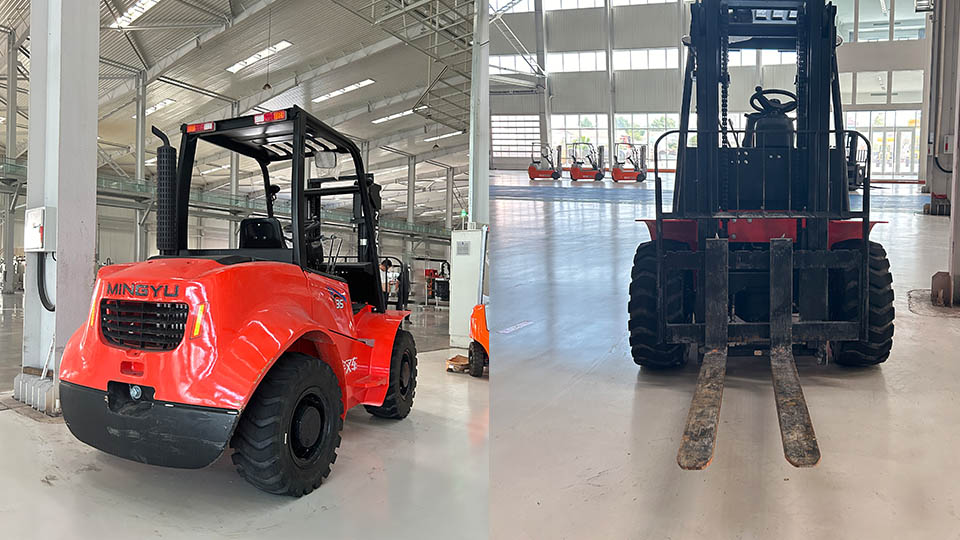
When troubleshooting a forklift electrical system you should approach the task methodically and with a strong emphasis on safety. Forklift electrical systems while generally robust can experience a variety of issues ranging from simple blown fuses to complex wiring faults or malfunctioning control modules. A systematic troubleshooting process is crucial to accurately diagnose the problem minimize downtime and ensure the safe return of the forklift to service. This technical article outlines the essential steps and precautions you should take when troubleshooting a forklift electrical system providing a comprehensive guide for maintenance personnel and technicians.
Prioritizing Safety Above All Else:
The first and most critical step when troubleshooting any forklift electrical system is to prioritize safety. Forklifts operate on electrical power which can pose significant hazards if not handled correctly. Before commencing any troubleshooting procedures you should always:
Disconnect the Power Source: This is paramount. For electric forklifts locate and disconnect the main battery connector. Ensure it is securely disconnected and cannot accidentally reconnect during your work. For internal combustion forklifts with electrical components such as starters and charging systems disconnect the battery terminals typically the negative terminal first.
Wear Appropriate Personal Protective Equipment PPE: This may include safety glasses insulated gloves and appropriate work clothing. Avoid wearing loose jewelry or clothing that could get caught in moving parts or electrical circuits.

Ensure Proper Ventilation: If the electric off road forklift is an internal combustion model and needs to be run for diagnostic purposes ensure the area is well-ventilated to prevent the buildup of harmful exhaust fumes.
Use Insulated Tools: When working on or near electrical components always use tools with insulated handles to prevent accidental electrical shock.
Follow Lockout Tagout Procedures: If the troubleshooting process requires leaving the forklift unattended ensure that proper lockout tagout procedures are followed to prevent accidental energization.
Consult the Forklift's Service Manual: The manufacturer's service manual is an invaluable resource containing wiring diagrams component locations troubleshooting charts and specific safety precautions for the particular forklift model you are working on. Always refer to it.
A Systematic Troubleshooting Approach:
Once safety precautions are in place adopt a systematic approach to diagnose the electrical issue:
Gather Information and Symptoms: Begin by gathering as much information as possible about the problem. What were the operator's observations? When did the issue occur? What specific functions are not working or are malfunctioning? Are there any error codes displayed on the dashboard? This initial information can help narrow down the potential causes.
Perform a Visual Inspection: Conduct a thorough visual inspection of the entire electrical system. Look for obvious signs of damage such as frayed or broken wires loose connections corroded terminals burnt components or any physical damage to wiring harnesses connectors and electrical units. Pay close attention to areas that may have experienced mechanical stress or exposure to moisture or chemicals.
Check Fuses and Circuit Breakers: Fuses are designed to protect circuits from overcurrents and blown fuses are a common cause of electrical problems. Locate the fuse box or individual fuses and visually inspect them for breaks in the filament. Use a multimeter to confirm continuity across the fuse. Similarly check circuit breakers for trips and reset them if necessary but be aware that repeated tripping indicates an underlying fault that needs further investigation.
Inspect Wiring and Connections: Carefully examine wiring harnesses and individual wires for any signs of damage insulation breaks or loose connections. Pay particular attention to connectors ensuring they are properly seated and locked. Corrosion at terminals can impede electrical flow so clean any corroded connections with a wire brush or appropriate cleaning solution and apply dielectric grease to prevent future corrosion. Gently tug on wires to check for loose crimps or breaks within the insulation.
Test Battery Voltage and Condition: The battery is the heart of an electric forklift's electrical system. Use a multi meter to check the battery voltage ensuring it is within the manufacturer's specifications. Also check the battery terminals for corrosion and ensure they are clean and tightly connected. If the forklift has been sitting for a while or the battery seems weak consider having it load tested to assess its overall condition and ability to hold a charge. For internal combustion forklifts ensure the battery has sufficient charge to power the starter.

Utilize a Multi meter for Circuit Testing: A multi meter is an essential tool for electrical troubleshooting. Use it to check for continuity voltage and resistance in various circuits and components.
Continuity Testing: With the power disconnected use the continuity setting to check for broken wires faulty switches or open circuits. A lack of continuity where it is expected indicates a break in the circuit.
Voltage Testing: With the power connected carefully measure voltage at various points in the circuit to determine if power is reaching the components. Compare these readings to the values specified in the service manual. A lack of voltage where it should be present indicates a problem upstream.
Resistance Testing: With the power disconnected measure the resistance of components such as resistors coils and sensors. An incorrect resistance reading indicates a faulty component.
Diagnose Specific Components: Based on the symptoms and initial checks focus on testing individual electrical components that are likely to be involved. This may include:
Switches: Test the continuity of switches in both the open and closed positions to ensure they are functioning correctly.
Solenoids and Relays: Check for proper coil resistance and ensure the contacts are opening and closing as expected when power is applied to the coil.
Sensors: Test sensors according to the manufacturer's specifications which may involve checking voltage output resistance or frequency depending on the sensor type.
Motors: Inspect motor brushes and commutators for wear and test the motor windings for continuity and shorts to ground.
Control Modules (ECUs): Troubleshooting control modules often requires specialized diagnostic tools and software specific to the forklift manufacturer. Look for error codes and follow the troubleshooting procedures outlined in the service manual.
Follow Wiring Diagrams: Wiring diagrams are essential for understanding the electrical system and tracing circuits. Use the diagrams in the service manual to identify the correct test points and understand how different components are interconnected.
Isolate the Fault: Through systematic testing and elimination try to isolate the faulty component or circuit. Once the problem is identified proceed with the necessary repair or replacement.
Verify the Repair: After making a repair or replacing a component thoroughly test the affected circuit and the overall operation of the forklift to ensure the problem has been resolved and no new issues have been introduced.
Dealing with Intermittent Problems:
Intermittent electrical problems can be particularly challenging to troubleshoot as the fault may not be present during testing. In such cases:
Pay Close Attention to the Operator's Description: The circumstances under which the problem occurs (e.g., after the forklift has been running for a while when turning) can provide valuable clues.
Check for Loose Connections and Wiring: Intermittent issues are often caused by loose or poorly crimped connections that make and break contact due to vibration or movement.
Monitor System Voltages: Use a multimeter to monitor system voltages while the forklift is operating or when the problem is likely to occur to see if there are any voltage drops or fluctuations.
Consider Thermal Issues: Some components may malfunction only when they heat up. If the problem seems to occur after the forklift has been running for a while try allowing it to run until the fault appears and then quickly test suspect components.
The Importance of Proper Documentation:
Maintain detailed records of all troubleshooting steps findings repairs and component replacements. This documentation can be invaluable for future troubleshooting efforts and for tracking the history and reliability of the forklift's electrical system.
When to Seek Expert Assistance:
While basic electrical troubleshooting can be performed by trained maintenance personnel complex issues especially those involving control modules or intricate wiring faults may require the expertise of a qualified forklift technician or the dealer's service department. Do not attempt repairs beyond your skill level as this could lead to further damage or safety hazards.
Conclusion:
Troubleshooting a forklift electrical system requires a methodical approach a strong emphasis on safety and the use of appropriate tools and resources, particularly the forklift's service manual. By following a systematic process from gathering information to isolating the fault and verifying the repair technicians can effectively diagnose and resolve electrical issues minimizing downtime and ensuring the safe and reliable operation of these essential material handling machines. Remember that safety should always be the top priority and when in doubt seek the assistance of a qualified professional.
Name: selena
Mobile:+86-13176910558
Tel:+86-0535-2090977
Whatsapp:8613181602336
Email:vip@mingyuforklift.com
Add:Xiaqiu Town, Laizhou, Yantai City, Shandong Province, China